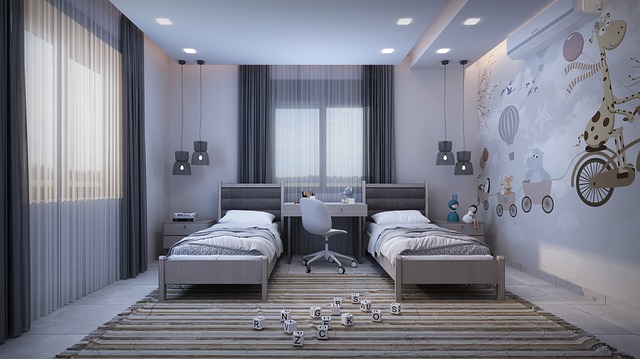Glulam (glued laminated timber) offers superior structural integrity, strength, and aesthetic versatility compared to conventional building materials. Its innovative manufacturing process, using multiple layers of wood, enhances durability and design flexibility. Glulam promotes sustainability with its renewable resource nature, reducing carbon footprints and minimizing waste due to longevity. It allows architects to create unique forms and open spaces while adhering to eco-friendly practices, making it a game-changer in modern construction.
“Glulam, a modern marvel in structural engineering, offers unparalleled advantages for architects and builders. This innovative material combines laminar wood elements, enhancing structural integrity while providing exceptional strength-to-weight ratios. Beyond its structural prowess, glulam is an environmentally sustainable choice, making it a popular green building solution. Its versatility allows for limitless design possibilities, enabling the creation of dynamic forms and unique aesthetics. Discover how glulam revolutionizes construction with its enhanced performance, eco-friendly nature, and boundless creative potential.”
- Enhanced Structural Integrity: Glulam's Strength Advantage
- Environmental Sustainability: A Green Building Solution
- Design Flexibility: Unlocking Aesthetic Possibilities
Enhanced Structural Integrity: Glulam's Strength Advantage
Glulam, or glued laminated timber, offers a remarkable enhancement to structural integrity compared to conventional building materials. Each component of glulam is carefully selected and precisely engineered, ensuring exceptional strength and stability. The manufacturing process involves gluing together multiple layers of wood, creating a laminar structure that can withstand significant loads without compromising its dimensional accuracy. This unique construction method allows for the utilization of various wood species, each contributing to the overall strength and aesthetics, resulting in a highly durable and versatile building material.
The glulam’s strength advantage is further emphasized through stringent quality control measures during manufacturing. Skilled technicians oversee every stage, from material selection to final assembly, ensuring consistent performance and precision. This attention to detail translates into superior structural performance, making glulam a preferred choice for modern architecture that demands both beauty and durability. Moreover, glulam design possibilities are vast, enabling creative forms and complex geometric shapes, while the manufacturing processes can be tailored to meet specific project needs.
Environmental Sustainability: A Green Building Solution
The use of glulam (glue-laminated timber) in construction offers a compelling solution for those seeking environmentally sustainable and innovative glulam construction methods. This natural material is a renewable resource, making it an attractive green building option. By utilizing glulam, architects and builders can create structures with reduced environmental impact compared to traditional materials. Not only does this reduce carbon footprints, but it also encourages the development of more eco-friendly practices in the industry.
Glulam structural integrity testing has shown that these laminated timbers possess exceptional strength and durability, contributing to the overall sustainability of buildings. The material’s longevity reduces the need for frequent replacements, minimizing waste. Moreover, glulam construction allows for intricate designs and unique architectural forms, showcasing the diverse glulam design possibilities. This versatility enables professionals to create visually appealing spaces while adhering to sustainable principles.
Design Flexibility: Unlocking Aesthetic Possibilities
The versatility of glulam (glulaminated timber) allows for unprecedented design flexibility in structural elements, opening a world of aesthetic possibilities for architects and engineers. This innovative glulam construction method enables the creation of unique forms and complex geometries that would be challenging, if not impossible, to achieve with traditional building materials. From sweeping arches and curved facades to intricate lattice structures, glulam architectural elements offer a remarkable range of expression.
By harnessing the strength-to-weight ratio of glulam’s long-lasting properties, designers can craft visually striking structures that seamlessly blend functionality with aesthetics. The material’s ability to span large distances without intermediate supports allows for open, interconnected spaces, enhancing the overall design flexibility and creating a sense of spaciousness. Furthermore, glulam’s adaptability accommodates both modern and traditional architectural styles, making it a versatile choice for various project types.
Glulam, with its exceptional structural advantages, offers a revolutionary approach to modern construction. By leveraging enhanced structural integrity, environmental sustainability, and design flexibility, glulam sets a new standard in building materials. Its strength and aesthetic appeal make it an ideal choice for architects and builders looking to create durable, eco-friendly, and visually stunning structures. Incorporating glulam into your project ensures a robust foundation for any design vision.







